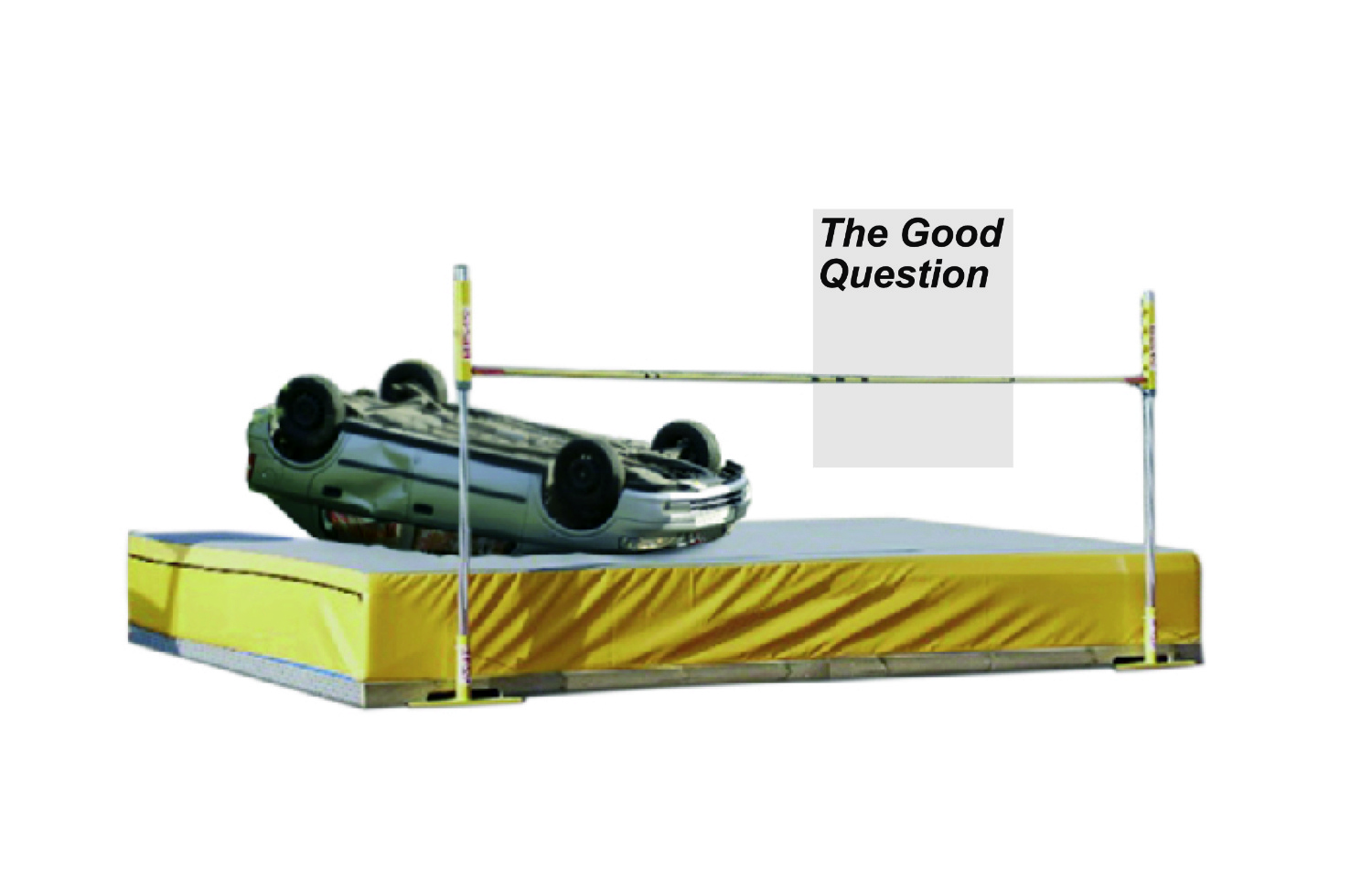The Good Question
installation work in development

The work combines 3 parts: a high jump set up, a car and the words The Good Question.
An overturned car is being placed atop a high jump mat and framed by high jump standards. It presents a highly aesthetic yet unsettling tableau. At first glance, the scene appears absurd: the car seems to have just completed a successful high jump — a surreal, slapstick-like scenario that is, of course, physically impossible.
The work deliberately invites dual interpretations. It can be viewed simultaneously as a sports competition frozen in time and as the aftermath of a catastrophic accident. The juxtaposition of these two perspectives blurs the line between triumph and tragedy, between the euphoric and the fatal.
The high jump equipment — sleek, lightweight, and engineered for peak athletic performance — contrasts sharply with the car, which is a wreck (worse than in the visulisation). Its roof is crushed, the windows shattered, its frame deeply sunken into the soft landing mat. The vehicle’s weight and its symbolic association with force, momentum, and modern power are in stark opposition to the almost fragile precision of the high jump setup.
This contrast is both visual and metaphorical. It speaks to the weight of societal expectations and the often overwhelming pressure to perform, to achieve, and to conform. The installation becomes an allegory for the human condition within competitive social systems. The wrecked car embodies the impossibility of always meeting those demands and the quiet violence of a life shaped by relentless performance metrics.
The car is a common working class model.
The tension between high societal expectations and a sense of personal powerlessness reflects a shared experience for many within our social system. At its core, the work grapples with a deeper question: What is it all for? What do we make of our lives? What do others make of our lives? These questions are at the heart of The Good Question, the third part of the installation. The words are being written on a wall, on textile, or installed.
Good questions often reach beyond our current understanding. They signal an awareness of uncertainty. They linger, they echo, and they point to something larger—something just beyond the limits of what we can clearly explain. These are the questions that feel most essential, precisely because they resist resolution.
Playing continuously from the car's radio is music from The Smile Sessions by The Beach Boys. The album, known both for its ambition and for the psychological toll it took on its creators, underscores the work’s themes of fractured optimism, lost utopias, and the dissonance between public image and internal collapse.